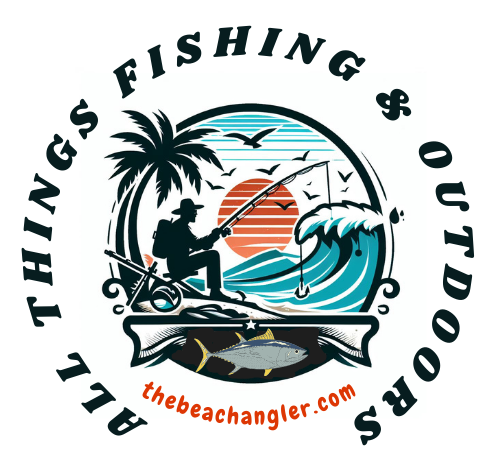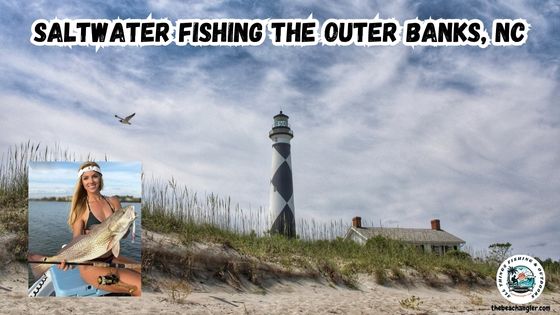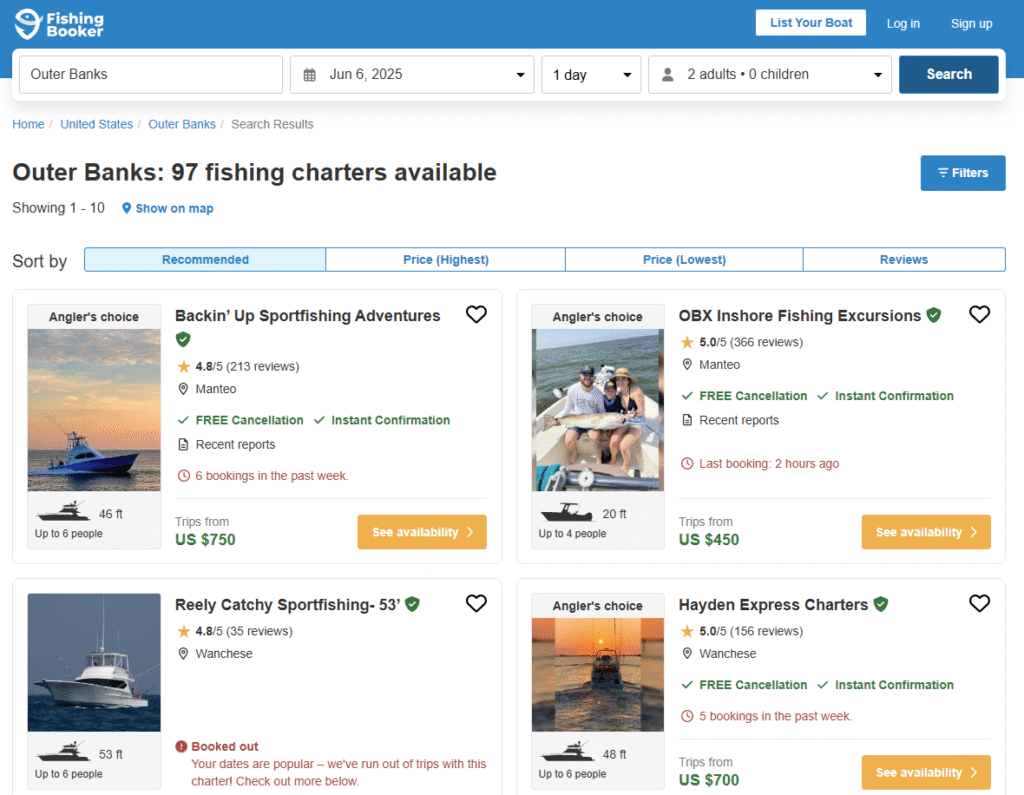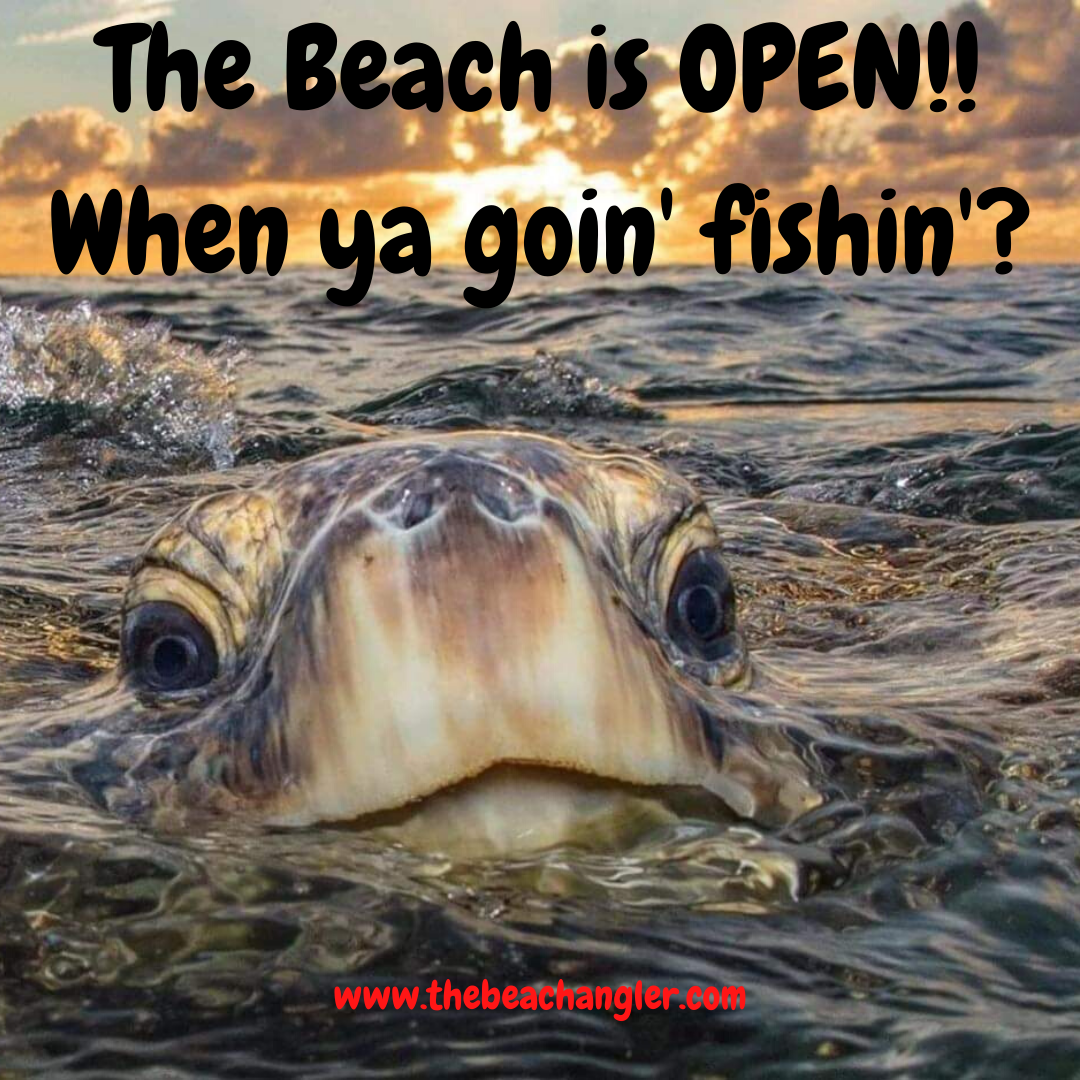Saltwater fishing on the Outer Banks is something I always look forward to. The long stretches of sandy shoreline, scenic piers, and winding sounds give me so many places to cast a line. This part of North Carolina has a well-earned reputation for offering some of the best saltwater fishing on the East Coast, drawing beginners and experienced anglers alike.
QUICK LOOK: Top Saltwater Fishing Spots on the Outer Banks
- Kitty Hawk Fishing Pier: This wooden pier sits close to Corolla and attracts local anglers searching for everything from Spanish mackerel and spot to big red drum.
- Avalon Fishing Pier: Avalon feels like a classic Outer Banks staple, with people of all ages fishing side by side. Bluefish and speckled trout are common here.
- Nags Head Fishing Pier: This spot offers good summer runs of bluefish, Spanish mackerel, and king mackerel. The tackle shop always has helpful advice and up-to-date fishing reports.
- Jennette’s Pier: An impressive concrete structure, Jennette’s is over 1,000 feet long and holds up to the roughest Atlantic weather. With aquariums, educational exhibits, and a long list of catchable species, from flounder to cobia.
- Outer Banks Fishing Pier: South of Nags Head, this is one of the few piers open around the clock. After sundown, I’ve even hooked a few surprise catches under the lights.
- Cape Point, Hatteras Island: Located where two major ocean currents meet, Cape Point is a thrilling location for anglers seeking trophy fish. I have seen (and sometimes caught) red drum, bluefish, and even the occasional shark.
- Corolla Beach: Known for its beautiful, wide sand and rolling surf, Corolla is ideal for casual casting. It’s also one of the best places to find bluefish and red drum in the fall, along with sea mullet and pompano in warmer months.
- Pea Island National Wildlife Refuge: This stretch sits just north of Rodanthe and offers a quiet setting away from crowds. I have pulled in nice flounder and trout here when the tides are right.
- Pamlico Sound: This is the largest lagoon on the East Coast, known for healthy populations of drum, flounder, speckled trout, and striped bass.
- Roanoke Sound: The area around the Pirates’ Cove bridge especially stands out for trout, sheepshead, and rockfish. There are plenty of public access points and guides offering inshore trips if I want local expertise.
- Albemarle Sound: This is where I target bigger red drum in summer and fall. With shallower water and plenty of baitfish, it’s a reliable spot for steady action.
- Croatan and Currituck Sounds: Not as heavily trafficked but still productive, these areas offer flounder, puppy drum, and a good chance at stripers during their run.
Whether I’m looking to reel in a feisty drum from a pier or test my luck at surf fishing on the beach, there’s always a new spot to stumble upon. I’m going to walk you through my favorite fishing locations across the Outer Banks, and I’ll share what makes each place special for anglers like me.
Plus, along the way, I’ll add some tips I’ve picked up over the years of fishing here as well as more detailed descriptions of when, how, and why to try each spot.
Top Spots for Saltwater Fishing on the Outer Banks
The Outer Banks stretch for over 100 miles along North Carolina’s coast, offering a variety of saltwater fishing environments. I’ve found everything from busy fishing piers with amenities to quiet soundside areas perfect for a peaceful day on the water.
Knowing where to start can feel overwhelming. Here’s how I break down the most popular spots I keep returning to: fishing piers, beaches, and local sounds. Each environment is distinct, and the Outer Banks’ unique location provides an almost endless opportunity to try new tactics throughout the year.
Fishing Piers: Easy Access and Consistent Action
Pier fishing on the Outer Banks means I get to fish over deeper water without needing a boat. Most piers have tackle shops, snacks, restrooms, and even rod rentals, making it easy to fish for a few hours or spend the whole day. Here are a few piers I recommend:
- Kitty Hawk Fishing Pier: This wooden pier sits close to Corolla and attracts local anglers searching for everything from Spanish mackerel and spot to big red drum. I like how early mornings can feel peaceful here before things get busy with vacationers.
- Avalon Fishing Pier: Avalon feels like a classic Outer Banks staple, with people of all ages fishing side by side. Bluefish and speckled trout are common here. I appreciate the friendly feel and the well-kept facilities.
- Nags Head Fishing Pier: This spot offers good summer runs of bluefish, Spanish mackerel, and king mackerel. The tackle shop always has helpful advice and up-to-date fishing reports.
- Jennette’s Pier: An impressive concrete structure, Jennette’s is over 1,000 feet long and holds up to the roughest Atlantic weather. With aquariums, educational exhibits, and a long list of catchable species—from flounder to cobia—I find it’s worth visiting even if my luck is hit or miss. On windy days, the height above the waves can make casting a bit more of a challenge, but it keeps you dry, and the view is unbeatable.
- Outer Banks Fishing Pier: South of Nags Head, this is one of the few piers open around the clock. I like the relaxed, no-fuss vibe and the fact that I don’t need a separate license to fish here. After sundown, I’ve even hooked a few surprise catches under the lights.
Every pier has its own personality. While the crowds pick up in summer, I think there’s something comforting about the hum of conversation, the clatter of cast lines, and the occasional whoop when someone lands a keeper. The camaraderie on the pier is hard to beat, and I’ve picked up plenty of tips just by chatting with fellow anglers.
Surf and Beach Fishing Spots: For Anglers Who Love Wide-open Shores
Beaches along the Outer Banks are well known for surf fishing. I like that I can park the car close by, relax in a chair, and listen to the ocean while waiting for a bite. These are a couple of beaches I never miss:
- Cape Point, Hatteras Island: Located where two major ocean currents meet, Cape Point is a thrilling location for anglers seeking trophy fish. I have seen (and sometimes caught) red drum, bluefish, and even the occasional shark. Vehicle access changes by season, so I always check local rules before heading out. Casting into the shifting rips and troughs requires a long rod and heavier weights, but the payoff is worth it when the drum are schooling.
- Corolla Beach: Known for its beautiful, wide sand and rolling surf, Corolla is ideal for casual casting. It’s also one of the best places to find bluefish and red drum in the fall, along with sea mullet and pompano in warmer months. The gentle slope here makes it accessible for families, too, and I’ve seen plenty of first-timers land their inaugural catches with big smiles.
- Pea Island National Wildlife Refuge: This stretch sits just north of Rodanthe and offers a quiet setting away from crowds. I have pulled in nice flounder and trout here when the tides are right. The wildlife is a bonus every time I visit, so keep your eyes peeled for osprey and pelicans overhead.
I’ve learned that tides and the time of day matter when surf fishing. Early morning or late evening usually brings more action, and overcast days often help too. I keep a long surf rod and different weights in my trunk since conditions can change quickly with wind and waves. Sometimes, when the waves get rough, I’ll switch up and use heavier pyramid sinkers to hold bottom.
The Sounds: Exploring Calm Waters and Versatile Catches
While the ocean gets most of the attention, I think some of the best saltwater fishing happens in the Outer Banks’ sounds. These shallow, protected waterways offer a different experience—quieter, often more relaxed, and great for inshore species.
- Pamlico Sound: This is the largest lagoon on the East Coast, known for healthy populations of drum, flounder, speckled trout, and striped bass. I’ve often launched a kayak or hopped on a half-day charter here to fish in calmer waters, which is great for newer anglers or families. Summer evenings offer a peaceful atmosphere, and the sunsets can be eye-catching.
- Roanoke Sound: The area around the Pirates’ Cove bridge especially stands out for trout, sheepshead, and rockfish. There are plenty of public access points and guides offering inshore trips if I want local expertise.
- Albemarle Sound: This is where I target bigger red drum in summer and fall. With shallower water and plenty of baitfish, it’s a reliable spot for steady action. If you have access to a small boat, try reaching out to the coves and marsh edges for the best chance at a trophy drum.
- Croatan and Currituck Sounds: Not as heavily trafficked but still productive, these areas offer flounder, puppy drum, and a good chance at stripers during their run.
In the sounds, I usually slip into waders or fish from a small boat, focusing on grass beds, oyster bars, and creek mouths. Light tackle works well here, and I often switch between live bait and soft plastics depending on what’s biting.
If you like sight fishing, the clear shallows in late spring are prime for stalking red drum and trout. Keep an eye out for bird activity—diving gulls often point to bait schools and active fish.
Common Fish Species and When to Target Them
The Outer Banks are famous for seasonal migrations that keep fishing interesting all year. I try to time my trips around the following patterns:
- Red Drum: Peak in spring and autumn, especially around Cape Point and in the sounds.
- Bluefish & Spanish Mackerel: Run strong in warmer months along piers and surf beaches.
- Flounder: Abundant in the sounds and around pier pilings from spring into early fall.
- Speckled Trout: Show up reliably through fall and winter in the sounds and around bridges.
- Striped Bass (Rockfish): Targeted mostly in the sounds during cooler weather.
I follow local fishing reports and try different baits based on the season. Shrimp, sand fleas, cut mullet, and artificial lures all have their days, so I usually bring a small selection so I can adapt as needed.
If you’re unsure, ask at the nearest bait shop—they’ll know what’s working that week. Some fish, like red drum, can be incredibly picky, while bluefish are famous for their aggressive strikes, so don’t hesitate to mix up your approach.
While fishing in the Outer Banks, you may also stumble upon less common but exciting catches like sheepshead, black drum, pompano, kingfish, and the occasional shark, especially when the water is warmer. Keeping notes about your trips helps track patterns and makes each return visit more productive.
Planning Tips and Practical Advice Before You Go
Before heading out, I consider a few things to make the experience more enjoyable and productive. Here’s what I keep in mind:
- Licenses: Most saltwater fishing requires a Coastal Recreational Fishing License in North Carolina, but some piers cover this cost for you.
- Gear: I bring weather-appropriate clothing, sunscreen, insect repellent, and water. Weather changes quickly, so layering is smart. Bring extra leaders and tackle because a frayed line from rocks or an unexpected bite-off can mean missing out on a big catch if you’re not ready.
- Regulations: The NC Division of Marine Fisheries updates catch limits and size requirements for different species. I check their website before fishing to make sure I stay legal and always keep a copy of the latest regulations handy on my phone or in my tackle box.
- Public Access: Many towns have free beach or sound access points, but some require parking fees or specific permits for four-wheel drive access. If you’re hitting a popular area like Cape Point, check for local updates on closures or restricted driving zones, especially during sea turtle nesting season.
During the busy summer months, I try to arrive early to secure a prime spot. For a quieter experience, I like fishing in spring or fall. I always greet other fishermen and ask about recent catches. That’s how I’ve picked up some of my best local tips. Also, carry trash bags to keep your area clean and help maintain the natural beauty that makes the Outer Banks so special for everyone.
Local Knowledge: Worthwhile Resources and Guided Options
If I’m new to an area or want to get better at my skills, local tackle shops and guides are the best resources. The staff at these stores usually offer advice on the best baits, successful rigs, and the current hot spots.
Booking an inshore or offshore charter trip is a great way to check out new techniques and access places only reachable by boat. A lot of captains are happy to share stories and know the waters like the back of their hand. I have personally used fishingbooker.com to book fishing charters, and they have always provided a great service. You can read my full review on fishingbooker.com here.
If you’re looking for current conditions, most shops post daily fishing reports, which are a gold mine for figuring out when and where to head out. For those bringing families, many guides offer short outings and patient instruction, making it a stress-free introduction to Outer Banks fishing.
Good Local Outer Banks Fishing Information Sources:
- outerbanks.org – Local fishing charters, guides, and fishing reports.
- outerbanks.com – Information on charters, guides, fishing reports, local attractions, and amenities.
- obxconnection.com – Outer Banks Online Fishing Forum
- outerbanksfishing.com – Information on Outer Banks Fishing Piers, fishing reports, and webcams.
Frequently Asked Questions
These are some questions I get or ask when planning my fishing trips to the Outer Banks:
Do I need a fishing license to fish on the Outer Banks?
In most cases, yes. A North Carolina Coastal Recreational Fishing License covers saltwater fishing along beaches and in the sounds. Most public piers include the license in their ticket price.
Can I keep the fish I catch?
Yes, as long as the species and size fit within North Carolina’s regulations. These rules help protect both fish populations and the experience for future anglers.
What’s the best time of year to fish?
Spring and fall bring the best variety and opportunities for large fish, but summer offers plenty of action, too. Winter can be slower, though species like speckled trout and stripers can still be caught. If targeting trophy drum is your goal, late fall’s cooling temperatures usually spark strong runs in both surf and sound waters.
Are there gear rental options for visitors?
Definitely. Most major piers offer rod and tackle rentals. Local surf shops and bait stores also carry gear for rent or purchase. You can even find daily or weekly rental packages for everything from surf rods to crab pots—helpful for visitors flying in or new to fishing.
Wrapping Up: Final Thoughts on Saltwater Fishing the Outer Banks
I keep coming back to the Outer Banks because of the endless variety of fishing experiences. With the right planning, some flexibility, and a sense of adventure, anglers at any skill level can find their favorite spot. Whether I’m after a trophy red drum or simply enjoying time outdoors with friends, the Outer Banks always make for a memorable fishing trip.
If you’re planning your own adventure, remember to respect local regulations, support small tackle shops, and be open to new methods and spots. That’s how each visit gets better and better—and why fishing here is an experience I’m always eager to share.
Check Out Our Most Recent Fishing Destination Articles:
- 7 Tips for Fishing Gulf Of Mexico Nearshore Rigs In Texas
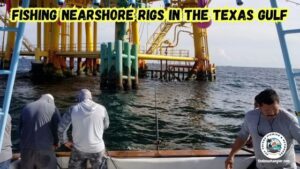
- Fishing The Florida Everglades

- San Diego California Sportfishing Adventures
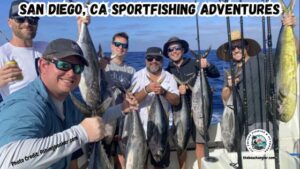
- 12 Top Saltwater Fishing Spots On The Outer Banks
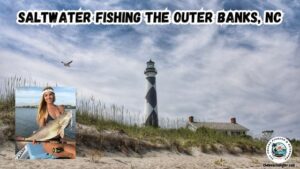
- 4 of the Best Saltwater Fishing Spots For Beginners
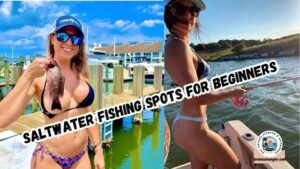
- Top 10 Saltwater Fishing Spots Around The World
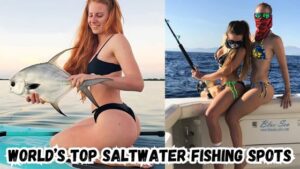
As always, stay safe, enjoy the journey, and please try to leave it cleaner than you found it. If you have any comments, questions, ideas, or suggestions, please leave them in the comment section below, and I’ll get back to you ASAP. You can follow us on Facebook: Rex The Beach Angler, Instagram: thebeachangler7, Twitter: @AnglerBeach, and YouTube: Man Art Creations.
P.S. Thanks so much for checking out our blog; we really appreciate it. Just so you know, we may receive a commission if you click on some of the links that appear on our site. This helps us keep our content free and up-to-date for everyone. We appreciate your support!
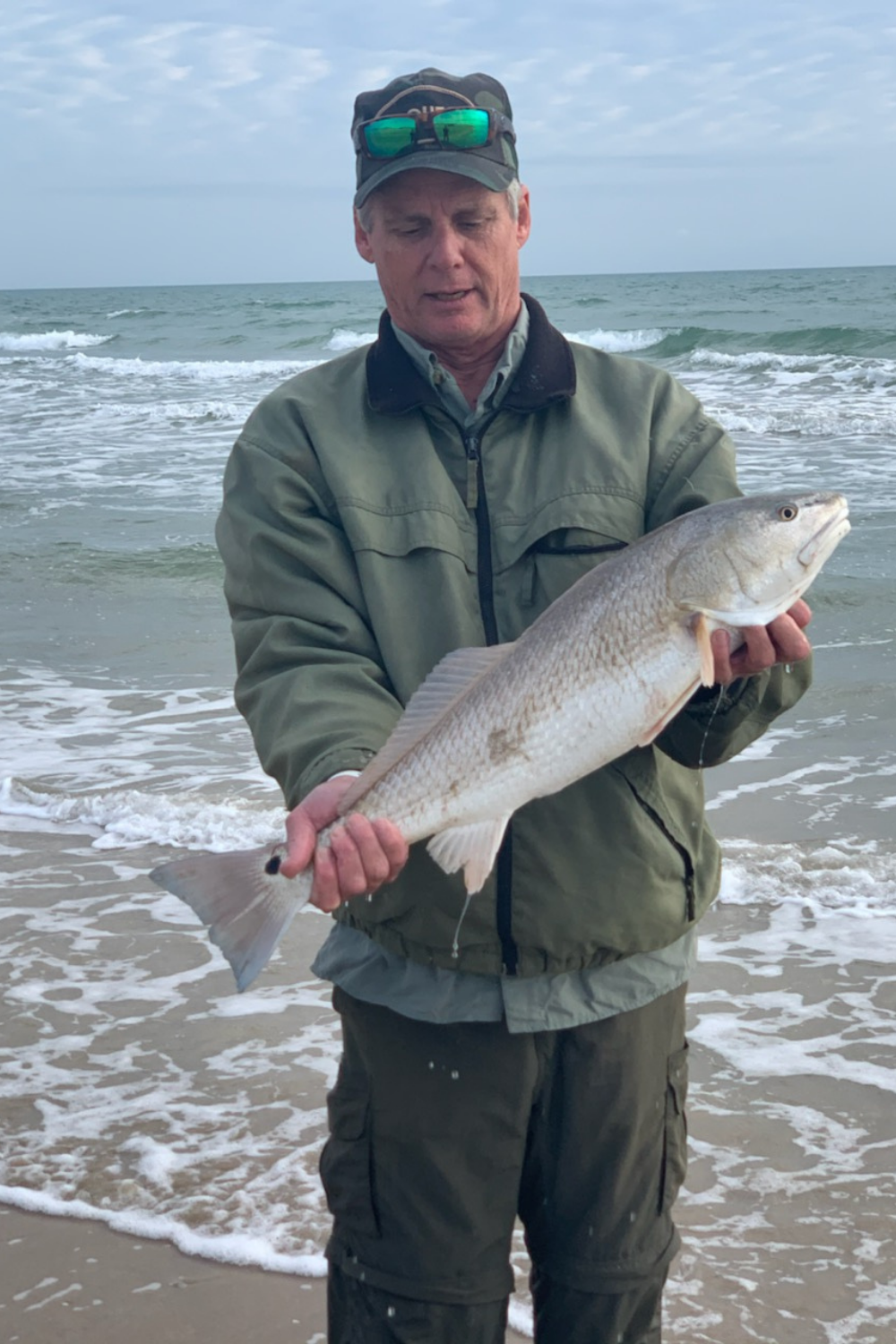
A life long surf fisherman with 50+ years of experience, I am also an avid hunter and outdoorsman. I will be sharing my passion for the outdoors with you so be prepared for hunting, fishing, camping, hiking and more. Along with gear reviews and the latest trends and innovations in the outdoor industry.
